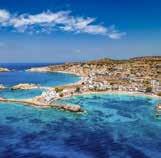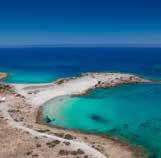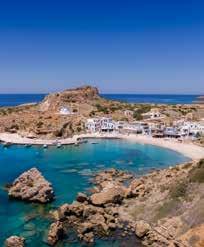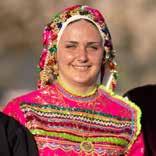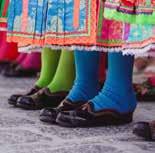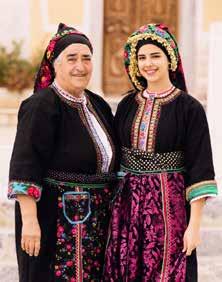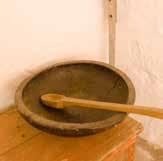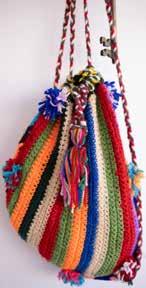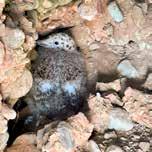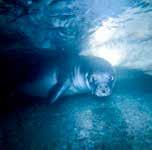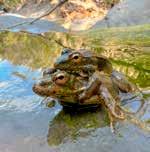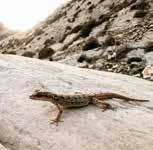





| MUNICIPALITY OF KARPATHOS Πηγάδια Κάρπαθος, ΤΚ 85700 | Pigadia Karpathos, Postcode 85700 Τ.: +30 22453 60114 | +30 6977 731346 karpathos.gr @ dimoskarpathou@gmail.com
Region of South Aegean | Karpathos - Saria Management Body | Association of the Karpathians all over the world Eco-tourism in Karpathos
Surfing in Karpathos
Municipality of Karpathos Visit Karpathos Island, Municipality Of Karpathos

Introduction
Overview
Karpathos is the second largest island in the Dodecanese, after Rhodes. It offers a unique combination of natural beauty and cultural heritage. The island is known for its distinctive beaches, beautiful mountainous landscapes, and traditional villages, making it a perfect destination for travellers looking for authenticity. The locals maintain their traditions and customs alive, and the island is famous for its hospitality.
Geography & Climate
Karpathos boasts a stunning geophysical relief featuring diverse landscapes ranging from steep mountains to golden sandy beaches. The island’s highest point is the peak of Kali Limni of Mount Lastos, located at 1,215 metres and in central Karpathos, accessible from Volada.
The island is known for its Mediterranean climate, characterised by mild winters and dry, warm summers. The strong nothern winds, called meltemia, provide ideal conditions for water sports, particularly windsurfing.
Local Transportation
During the summer, boats depart daily from Pigadia to almost all the beaches, Diafani, and islands such as Saria and Kasos. Additionally, boats depart from Diafani to Pigadia, Saria, and the beaches of North Karpathos.
Moreover, boats are available for rent in Karpathos, with a captain, for private or group excursions. The route can be customised according to the visitor’s preferences, providing a unique opportunity to explore the island’s most remote and inaccessible beaches.






Γαστρονομία

Gastronomy
Local Dishes
The karpathian cuisine and the island’s gastronomy, in general, are centred around locally sourced ingredients, offering a unique blend of flavours and local products for an exquisite culinary journey.
“Makarounes”, in any version, is one of the island’s most famous dishes. It is a traditional hand-made fresh pasta served with roasted onion and grated salty cheese. Other popular dishes include goat, pork, or beef in red sauce served with rice and potatoes. This dish is usually served at festivals, weddings, and baptisms. Other popular dishes are “ofto” (byzanti), i.e. stuffed goat with rice baked in a wood-fired oven, stuffed cakes with myzithra and dill, “lachanopitia” and squid in a pot with beans.
Fish and seafood also play an essential role in the diet, with the Mediterranean Parrot fish, prawns from Karpathos, and Karpathian “Menoula” (Spicara maena) being particularly popular.
A key ingredient of Karpathian cuisine is the local olive oil, which is of excellent quality. To immerse yourself in traditional cooking, businesses and travel agencies offer courses on the island.
Local Products
The karpathian honey and olive oil are famous for their quality, while the wines from the local vineyards will pleasantly surprise you.
Other local products are the “ksilokouloura”, the “kouloures”, the baklava of Karpathos, and the so-called “baklava of fire”. Visitors can taste these products in local shops or offer them as gifts to loved ones.
Cheeses such as “manouli” (soft goat’s milk cheese) and “meriari” are also popular products, ideal for accompanying bread and olives.








Archaeological sites
The archaeological sites of Karpathos are of great historical significance, with sites from early antiquity.
The acropolis of Arkasa (Palaiokastro) showcases remains of archaic fortifications and classical cisterns, offering a glimpse into the island’s rich past.
In Pigadia, the acropolis of Poseidi, the ruins of the early Christian basilica of Agia Foteini (on the site of the ancient temple of Dioskouroi) and the tombs of Mili in a location where there was a pre-existing cult of Poseidon or Aphrodite, are major attractions for visitors.
Other noteworthy archaeological sites include the Shrine of Hestia, the fortress of Lefkos, the Roman cistern in Lefkos, the pirate village in the Palatia area of Saria.
Museums
Visitors to the island can also explore the following museums:
• Archaeological Museum of Karpathos: It is located in the island’s capital, Pigadia, and opened in 2005. It is housed in the Province House, a building constructed during the Italian occupation. The museum exhibits findings found on the island dating from prehistoric times to the post-Byzantine period.
• Folklore Museum of Menetes: The museum is in the village of Menetes, 7.6km from Pigadia. Housed in a 200-year-old, two-storey building, the museum was originally intended to be a church, but the project was not completed. It has been operating as a museum since 1995. At the museum entrance, visitors can admire rock-cut tombs. On the ground floor, there are traditional kitchen utensils and hand-painted plates, while on the first floor, everyday objects of the locals are on display. Among the exhibits are musical instruments and photographs.






• Agricultural Museum of Pyles: The Agricultural Museum of Pyles is a unique open-air museum located in Pyles, 15.5km from Pigadia, on the island of Karpathos. It has been built on the estate of the “Kousourelakeio” foundation. The museum features a rural house, a windmill, a threshing floor, a wine press for wine production, a wood oven, and various tools used in the threshing process. The premises also feature goats, a donkey, olive trees, and vines to offer visitors an authentic experience of rural life on Karpathos. This was a vital goal in the museum’s design.
• Folklore Museum of Othos: The museum is located 12.1km from the capital of Karpathos. It is affiliated with the association “Work and Joy of Othos,” which aims for visitors to see and admire an accurate representation of the interior of a Karpathian house. The house-museum is on the ground floor and adorned with traditional hand-painted plates and glassware on wooden shelves along the walls. The house is divided into a lower section called the “patos”, and an elevated wooden loft called the “soufas.”
The “patos” has a wooden sofa and a low table called a “sofras.” In the “soufas,” the family used to sleep on handmade mattresses stuffed with sheep’s wool. The rails of the “soufas” were decorated with handmade embroidery, while the vertical beam was covered with the so-called “stylomantila,” on which the initials of the housewife were embroidered. Finally, inside the museum, visitors can admire traditional musical instruments, objects from the rural life of the time, and other folk art such as textiles and ceramics.
• Folklore and Archaeological Museum of Arkasa: The museum is situated in the heart of the village of Arkasa, located 17km from the island’s capital. The museum’s collection comprises artefacts from the acropolis of Arkasia and the former site of the church of Agia Anastasia, now the location of Agia Sofia. Additionally, the museum showcases a variety of traditional items, including agricultural implements, traditional plates, and portable icons dating back to the Byzantine era.
• Museum of Vasileios Chatzivassilis: Olympos is a picturesque mountain village located in the northern part of Karpathos, where tradition is deeply rooted. The entire village resembles an openair museum. Adjacent to the central church stands the Museum of Vasileios Chatzivassilis, a folk artist.


Monuments and Churches
The church of Kyra Panagia is built on a rock by the sea and is known for its miraculous icon of the Virgin Mary. The monastery of Agios Georgios of Vasses in Aperi and the church of Agia Sofia in Arkasa offer stunning views and impressive architecture. Also worth visiting is the Panagia of Menetes, which has significant hagiographies and a unique view from the rock on which it is located.
Other significant church monuments are the central church of Olympos, with its impressive wooden carved iconostasis, Panagia Vrysiani in Mesochori, Agios Georgios in Lefkos, and Agios Ioannis in Mesochori, Agios Mamas of Menetes, Panagia Larniotissa and Agia Kyriaki in Pigadia, the cave church of Agios Loukas in Apella, Ai-Giannis in Vroukounta and the Holy Church of Zoodochos Pigi in Damatria.


In Karpathos, there are many options for water sports, as the island is known for its ideal conditions for water activities.
Water Sports
Windsurfing and Kitesurfing
Karpathos is known as one of the best windsurfing destinations in the Mediterranean. The bay of Afiartis and the surrounding area are famous for their ideal windsurfing conditions, including strong and stable winds and geomorphology, attracting windsurfers worldwide. Learning schools are available to learn the sport and provide equipment for all levels. Additionally, many people choose to kitesurf in the same bay due to the stable winds and large open areas with clear water. In the area of Pigadia there is a water sports centre.
Diving Locations
Karpathos offers amazing diving experiences due to its rich marine biodiversity and clear waters. In Pigadia, there is a diving centre that offers courses for beginners and advanced divers and organises dives at popular dive sites. Diving courses are available in popular spots such as Kastelia Beach, Agios Minas Beach, Fokia Beach, Achata Beach (cave), and the shipwreck at Diakoftis. Snorkelling
The beaches of Karpathos are ideal for exploring the seabed due to their clear and crystal clear waters, without the need for diving equipment.
Climbing Fields
Karpathos has numerous small climbing fields spread across the island. Climbing has been steadily growing in popularity since 2010, and there are now over 400 routes in 33 different fields. The island’s limestone rock offers diverse shapes and colours, with routes up to 30 meters in length. Karpathos offers more vertical and longer routes in different shapes and sizes than other climbing destinations in Greece. The routes are typically graded according to the French system, ranging from F5c to F7b, making it an ideal destination for moderate climbing, with routes also available from F3 to F9a. Notable climbing areas on the island include Adeia, Arkasa, Foiniki, Lefkos, Κastello, Achata, Pigadia, and Afiartis. Karpathos’ favourable weather conditions and climbing fields in diverse locations make it an ideal destination for climbing throughout the year.


Sea Kayak
Some beaches on Karpathos provide opportunities for sea kayak, allowing visitors to explore hidden coves and secluded beaches accessible only by water. In Pigadia, rental businesses offer canoes and kayaks, ensuring a unique experience on the water.
Standup paddling
This water sport is also popular and can be practiced on the windless beaches of the island, such as Ammoopi.






Ηiking Routes
Karpathos is a hiking paradise with numerous trails that offer unique experiences for exploring nature and enjoying panoramic views. The trails cover the entire island, especially the northern part, where areas are only accessible on foot. They offer breathtaking views, natural landscapes, and historic sites, such as the Ancient Vroukounta. The trails on Olympοs and Saria are suitable for hikers of all levels, while the gorges provide excellent opportunities for mountaineering. The island has a well-developed network of marked hiking trails, with over 30 mapped routes of varying difficulty levels that pass through pine forests, farmland, beaches, picturesque villages, and significant monuments. Direction signs are available throughout the network, while environmental interpretation signs provide information on the species and habitats of the protected area in North Karpathos. Local ecotourism businesses offer organised walking tours that allow visitors to discover the island’s natural beauty and cultural heritage.
The best period for hiking is from mid-April to the end of May and from early September to early November. Visitors should be equipped with comfortable shoes, water, snacks, and sun protection, while hiking sticks are recommended for challenging terrain.
Cycling
Karpathos offers incredible cycling experiences, combining the stunning mountains, green forests, and the beautiful turquoise waters of the Aegean Sea. Every turn reveals breathtaking landscapes, with routes passing through picturesque villages, scenic paths, and secluded beaches. Cycling on dirt roads and paths provides adventure and chances to stop at local taverns to enjoy the island’s traditional cuisine.
The altitude differences are significant, and the winds, especially in the summer, can be challenging. Good physical condition and experience are necessary due to the long distances and steep turns. However, the views and experience of exploring Karpathos by bike are priceless and offer authentic moments in the island’s natural environment.






In Karpathos, there are many churches and chapels. The locals or church committees organise festivals to celebrate religious feasts or saints ‘ names throughout the year, especially during the months of July, August, and September. The festivals typically include a Divine Liturgy, serving of traditional Karpathian food, and evening dancing and music by local musicians.
Visiting these festivals is a great way to experience the customs and traditions of the area. Some of the most famous festivals include:



Festivals
• 02/02: The festival of Ypapanti (Presentation of Christ) in the village of Arkasa,
• 10/02: The festival of Agios Charalampos in the village of Aperi,
• 11/02: The festival of Agios Vlasios in Othos village,
• 25/03: The festival of Evangelistria in Pigadia,
• 01/07: The festival of Agioi Anargyroi in the villages of Volada and Menetes,
• 17/07: The festival of Agia Marina in the village of Menetes,
• 27/07: The festival of Agios Panteleimon in the areas of Mertonas of Aperi, Arkasa and Stes of Othos (in the location of Stes, the festival lasts from 26/07 to 27/08),
• 06/08: The festival of Christ in the villages of Othos, Menetes, and Aperi,
• 15/08: The festival of Panagia in the villages of Pyles, Olympos, Menetes, and Aperi,
• 22/08: The festival of the Kyra Panagia and Panagia Ladiotissa in the area of Lai of Menetes,
• 23/08: The festival of Panagia Myrtonitissa in the settlement of Mertonas in Aperi,
• 28/08 the festival of Agios Ioannis in Lakki,
• 29/08 the festival of Agios in the area Loroi of Aperi and in the area of Vrykounta in North Karpathos,
• 07/09 the festival of Panagia Lariniotissa in Pigadia and Panagia Gynatou in the area of Eirou,
• 08/09 the festival of Panagia Vrysiani in the village of Mesochori village and Panagia of Plagia in Volada,
• 14/09 the festival of the Exaltation of the Holy Cross in the villages of Pyles and Olympos,
• 17/09 the festival of Agia Sofia in the village of Arkasa,
• 03/11 the festival of Agios Georgios in the village of Spoa,
• 07/11 the festival of Taxiarches (Archangels) in the settlement of Lasto of Volada and in the settlement of Tristomo in Diafani,
• 11/11 the festival of Agios Minas in the village of Olympos.


Άπελλα - Apella

(Σπόα)Ag. Nikolaos (Spoa)

- Achata


